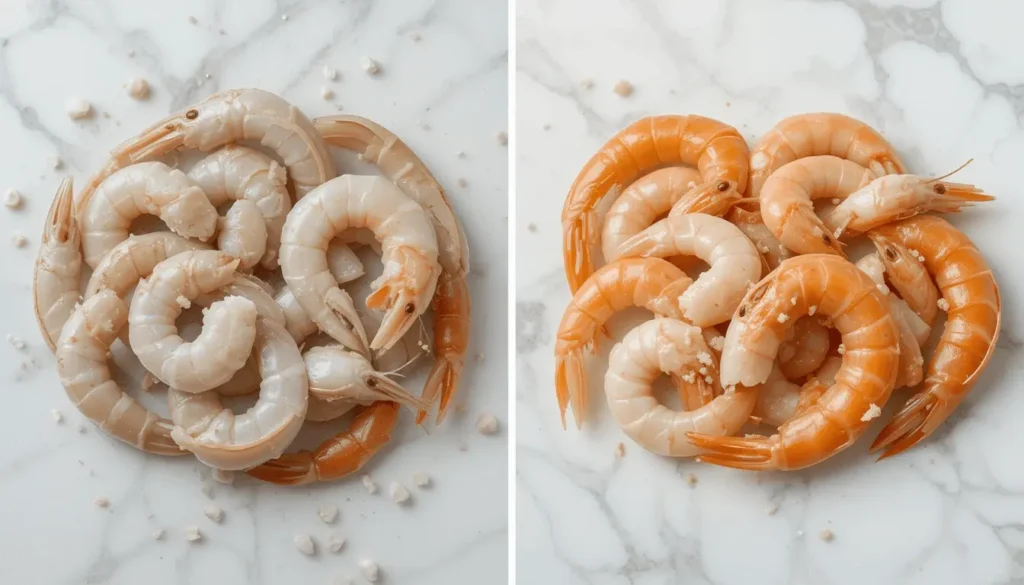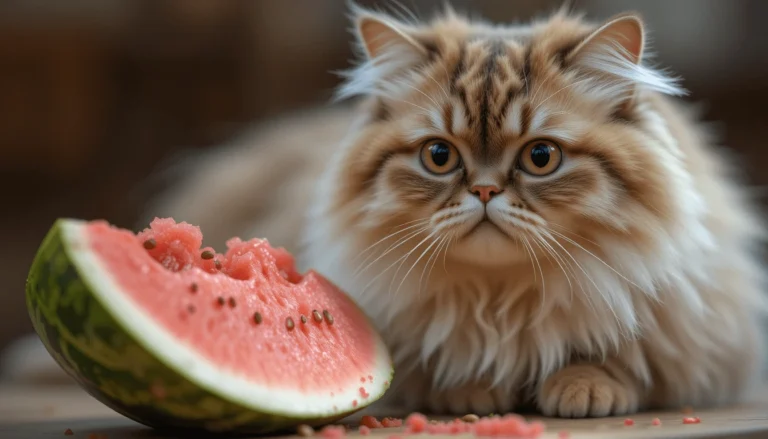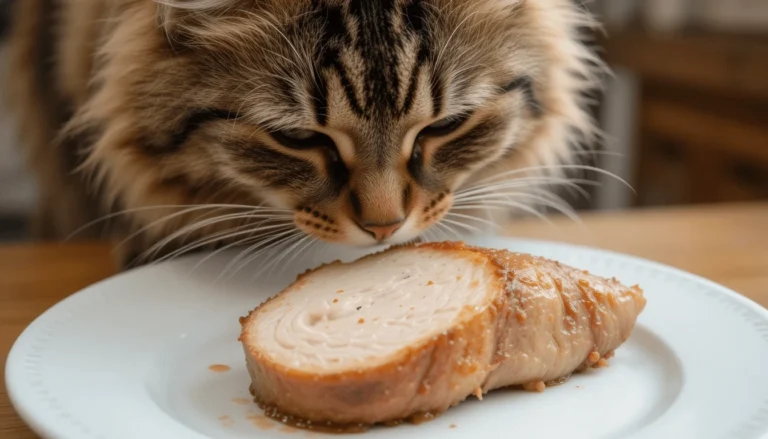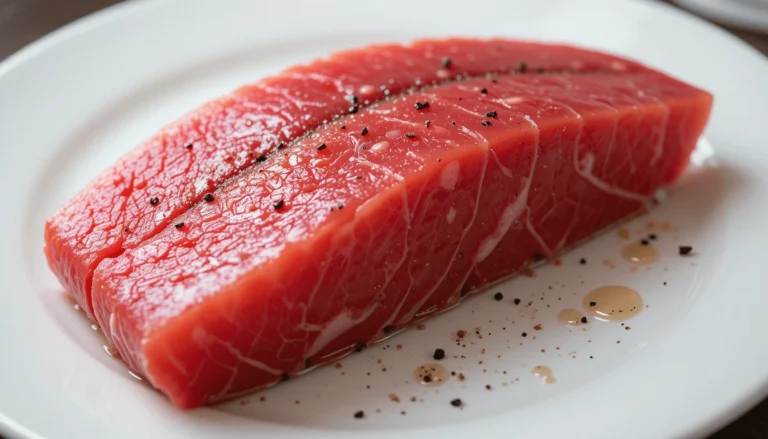Can Cats Eat Shrimp? What Every Cat Owner Needs to Know
Introduction
“As your cat stares longingly at your shrimp cocktail, you pause—can cats eat shrimp, or is it risky? Last week, my feline Loki swiped a shrimp off my plate, sending me into a panic. After consulting my vet, I learned shrimp can be a purr-worthy treat… but only if served right. Here’s what every cat owner must know.”
Is Shrimp Safe for Cats? Understanding the Risks and Benefits
Shrimp offers a tempting combination of flavor and nutrition that cats find irresistible. But before sharing your seafood dinner, it’s crucial to understand both the potential benefits and dangers.
Raw vs. Cooked Shrimp: Why Cooking is Non-Negotiable
Raw shrimp may seem like a natural choice for cats, but they carry significant health risks:
- Bacterial contamination – Raw shrimp can harbor dangerous pathogens including:
- Salmonella
- Listeria
- Vibrio
These bacteria can cause severe gastrointestinal distress in cats, leading to vomiting, diarrhea, and dehydration.
- Parasite risk – According to the FDA’s Seafood Safety Guidelines, raw shellfish may contain parasites that can infect your cat’s digestive system.
- Enzyme interference – Raw shrimp contain thiaminase, an enzyme that breaks down thiamine (Vitamin B1). Chronic consumption could lead to thiamine deficiency, causing neurological issues.
The solution? Always cook shrimp thoroughly. Boiling or steaming without any seasoning is the safest preparation method. Avoid:
- Butter or oil
- Garlic and onions (toxic to cats)
- Salt and other seasonings
Shells and Tails: More Than Just a Choking Hazard
While the crunchy texture of shrimp shells might seem appealing, they pose multiple dangers:
Physical Risks:
- Choking hazard – The rigid, curved shape can easily lodge in a cat’s throat
- Intestinal blockage – Sharp shell fragments may perforate or obstruct the digestive tract
- Mouth injuries – Sharp edges can cut delicate gums and oral tissues
Digestive Considerations:
Though shrimp shells contain chitin (a beneficial fiber), cats lack the proper enzymes to break it down efficiently. This can lead to:
- Constipation
- Gastrointestinal irritation
- Reduced nutrient absorption
Safe Preparation Tip:
Always peel shrimp completely, removing:
- The hard outer shell
- The tail fin
- The digestive vein (dark line along the back)
Allergy Watch: Recognizing Seafood Sensitivities in Cats
While less common than in humans, shrimp allergies do occur in cats. Be alert for these warning signs:
Immediate Symptoms (within 2 hours):
- Excessive scratching or face rubbing
- Swollen lips or eyelids
- Hives or skin redness
Delayed Reactions (12-48 hours):
- Chronic ear infections
- Recurrent skin infections
- Digestive upset (vomiting/diarrhea)
What to Do if You Suspect an Allergy:
- Stop feeding shrimp immediately
- Monitor your cat closely
- Consult your veterinarian
- Consider an elimination diet if symptoms persist
According to a Cornell Feline Health Center study, approximately 10-15% of food allergy cases in cats involve seafood proteins.
Health Benefits of Shrimp for Cats: A Nutritional Powerhouse
While safety concerns are paramount, properly prepared shrimp can offer several health benefits for your feline companion. Let’s examine why shrimp can be more than just a tasty treat.
Protein: The Building Blocks of Feline Health
Shrimp is an excellent source of high-quality protein, containing all the essential amino acids cats need:
- Muscle Maintenance – Provides 24g of protein per 100g serving, supporting lean muscle mass
- Taurine Rich – This crucial amino acid (250mg per 100g shrimp) supports:
- Heart health
- Vision
- Reproductive function
- Highly Digestible – With a digestibility rating of 90-95%, shrimp protein is easily utilized by cats’ bodies
According to a Tufts University Veterinary Study, animal-based proteins like shrimp are superior to plant proteins for meeting cats’ nutritional needs.

Omega-3 Fatty Acids: Beyond Basic Nutrition
The omega-3s in shrimp (particularly EPA and DHA) offer multiple benefits:
For Skin and Coat:
- Reduces dryness and flakiness
- Promotes shiny fur
- Decreases excessive shedding
Joint and Mobility Support:
- Helps manage inflammation
- May alleviate arthritis symptoms
- Supports cartilage health
Cognitive Function:
- Supports brain health in senior cats
- May help maintain cognitive function
Vitamins and Minerals: The Micronutrient Advantage
Shrimp contains an impressive array of micronutrients:
| Nutrient | Benefit for Cats | Amount per 100g |
|---|---|---|
| Selenium | Powerful antioxidant | 40mcg |
| Vitamin B12 | Nerve function, energy | 1.5mcg |
| Phosphorus | Bone health | 200mg |
| Iron | Oxygen transport | 1.5mg |
| Zinc | Immune support | 1.3mg |
Important Note: While nutritious, shrimp should never replace balanced commercial cat food. The WSAVA Global Nutrition Guidelines recommend treats comprise no more than 10% of a cat’s daily caloric intake.
How to Safely Feed Shrimp to Your Cat: A Step-by-Step Guide
Now that we’ve covered the benefits, let’s discuss practical feeding guidelines to ensure your cat enjoys shrimp safely.
Portion Control: Finding the Right Balance
General Recommendations:
- For average adult cats (8-10 lbs): 1-2 small shrimp (about 15g total) 1-2 times weekly
- For kittens or small breeds: 1/2 shrimp occasionally
- For overweight cats: Consider calorie content (1 medium shrimp = ~7 calories)
Feeding Frequency:
- Maximum: Twice weekly
- Ideal: Once weekly or less
- Never: Daily shrimp consumption
Pro Tip: Use shrimp as a high-value reward for training or medication administration.
Preparation Methods: Safety First
Step-by-Step Safe Preparation:
- Purchase fresh or frozen raw shrimp (avoid pre-cooked varieties with additives)
- Thaw frozen shrimp in refrigerator overnight
- Remove shell, tail, and digestive vein
- Rinse under cool water
- Cook using one of these methods:
- Steaming (3-4 minutes until opaque)
- Boiling (2-3 minutes in plain water)
- Baking (400°F for 6-8 minutes)
- Cool to room temperature
- Chop into bite-sized pieces (about 1/4″ cubes)
- Serve plain – no seasonings, sauces, or oils
- Methods to Avoid:
- Fried shrimp
- Breaded shrimp
- Shrimp with garlic/onion
- Shrimp cocktail sauce
- Tempura-style preparations

Introducing Shrimp: The Gradual Approach
When offering shrimp for the first time:
- Initial Test – Offer a pea-sized portion
- 24-Hour Wait – Monitor for adverse reactions
- Second Trial – If no reaction, offer slightly more
- Regular Feeding – Only after 2-3 successful trials
Storage Tips:
- Refrigerator: Up to 2 days in airtight container
- Freezer: Up to 1 month (portion before freezing)
- Discard any uneaten shrimp left out >2 hours
Conclusion : Shrimp as Part of a Balanced Feline Diet
While we’ve answered “Can cats eat shrimp?” with a cautious yes, the key takeaway is that moderation and proper preparation are essential. Shrimp can be a delicious, protein-packed treat for your feline companion, but it should never replace a complete, balanced diet formulated specifically for cats.
Before sharing shrimp with your cat, always:
- Cook it thoroughly (no raw shrimp!)
- Remove shells, tails, and veins (choking and blockage hazards)
- Serve plain (no butter, garlic, or seasoning)
- Start small (watch for allergies or sensitivities)
If your cat has pre-existing health conditions (like kidney disease or obesity), consult your veterinarian before introducing shrimp. And remember—while some cats go crazy for shrimp, others may turn up their noses. After all, isn’t that just like a cat?
More Resources for Further Reading:
- Safe Or Not ? Cat Food Guide
- ASPCA – Human Foods for Cats
- FDA – Seafood Safety Guidelines
- Cornell Feline Health Center – Cat Nutrition
FAQs: Your Shrimp & Cat Questions Answered
1. Can cats eat shrimp every day?
No. Shrimp should only be an occasional treat (1-2 times per week max). Daily feeding could lead to nutritional imbalances or excessive iodine intake, which may affect thyroid function.
2. Are frozen shrimp safe for cats?
Yes, as long as they’re plain, unseasoned, and fully cooked before serving. Avoid pre-marinated or breaded frozen shrimp.
3. Can shrimp cause diarrhea in cats?
Yes, if introduced too quickly or fed in large amounts. Always start with a tiny portion and monitor your cat’s digestion.
4. Do cats need shrimp in their diet?
No. While shrimp offers protein and omega-3s, cats thrive on high-quality commercial cat food. Think of shrimp as a bonus snack, not a dietary requirement.
5. Can kittens eat shrimp?
Kittens can have shrimp in very small amounts, but their primary diet should be kitten-formulated food. Consult your vet first.







